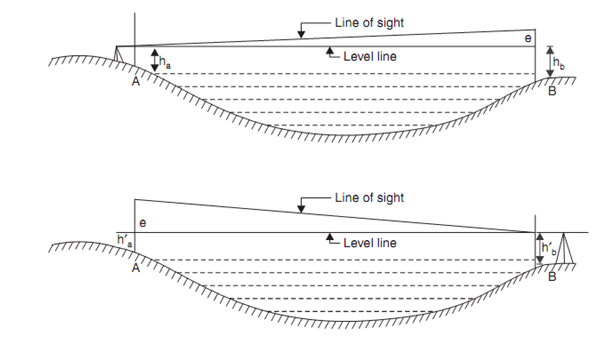Reciprocal Levelling
It is better to keep distance of fore sight and back sight equal in levelling the following errors are eliminated by doing so:
- Error which is occurs due to non-parallelism of line of collimation and axis of bubble tube.
- Errors which are occur due to curvature and refraction.
But in levelling across obstacles like and ravine and river it is not possible to maintain equal distances for back sight and fore sight. In such case reciprocal levelling as described below is used:

Referring to first figure:
Since A is very near, error in reading at A is negligible. Therefore ha is accurate reading. Assume error in hb be 'e',
Then accurate reading at B = hb - e
∴ Difference in elevations = H = ha - (hb - e) ... (i)
(ii) Referring to second figure, since B is very near to instrument, hb′, may be taken as accurate reading.
Accurate reading at A = ha′ - e
Difference in elevations H = (ha′ - e) - hb′ ... (ii)
From equations (i) and (ii) we obtain,
2 H = ha - (hb - e) + (ha′ - e) - hb′
= (ha + ha′) - (hb + hb′)
(ha + ha ′ ) - (hb + hb ′ )

Therefore, the true difference in the elevations of the 2 points is equal to the mean of the 2 apparent differences in the elevations.